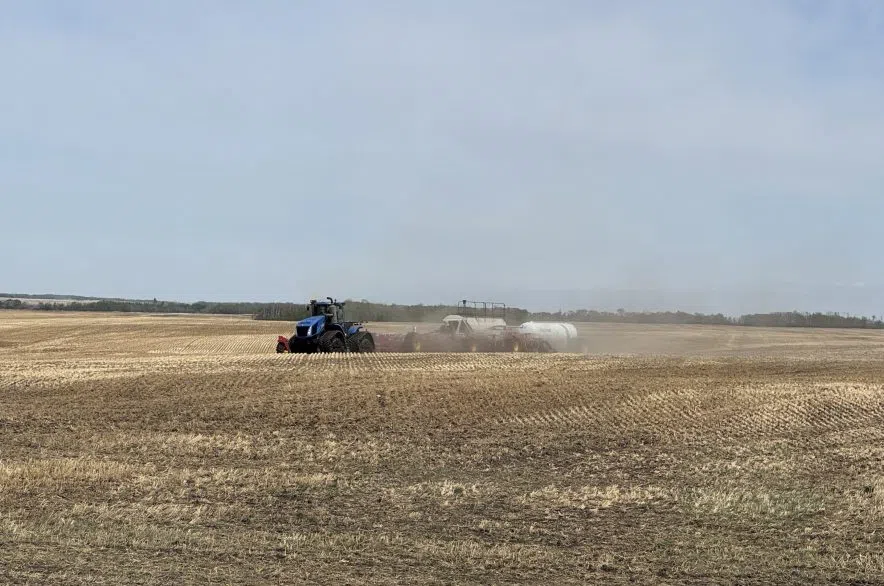What’s trending in the seasonal markets and more on RealAg on the Weekend.
Shaun Haney speaks with LeftField Commodity Research’s Chuck Penner as the growing season is underway.
They talk about how some crops farmers are planting now grow best during certain seasons. Haney cautions that we need to think about the markets and farming at the same time.
Listen to RealAg on Saturday afternoons from 4 p.m. to 5 p.m. and Sundays from 11 a.m. to 12 p.m on 980 CJME and 650 CKOM.
Listen to Chuck Penner on seasonal market trends:
SHAUN HANEY: The equity market is extremely focused on the impact of tariffs. How’s the commodity market reacting to all this right now?
CHUCK PENNER: It’s kind of maybe in a bit of a period of wishful thinking or hoping, all of this just goes away. For the most part, our commodities that we’re trading with the US are still under the United States–Mexico–Canada Agreement (USMCA) or the Canada-United States-Mexico Agreement (CUSMA) — depending on which country you’re in — but those are still under that agreement.
We’ve been able to avoid that for the most part for Ag commodities. That can always change. I expect the worst of the turmoil has passed and now some more logical thinking is occurring and so on. I’m hoping on that front, we’re seeing that fade away.
China is still a bit of a wild card. Some people have suggested China will scale back the tariffs on peas and on canola products and so on. That’s more wishful thinking than anything.
There’s always the possibility that they slap some tariffs on canola seed yet too.
For the most part, markets are trading more on fundamentals, and now we’re getting into the weather season for a lot of these crops. There’s just a lot more buzz about that. That doesn’t mean this has disappeared entirely, but we’re getting back to thinking about the things we usually think about.
What are the fundamentals telling us about the broader market?
PENNER: We’re really watching what’s going on.
We start in the wheat market, we’re watching what goes on in the winter wheat market, then we’re starting to see planting of the spring wheat crop and so on.
There are areas of concern about dryness. I was looking at a map of Western Canada. The northern tier of the prairies hasn’t had any rain in the last 30 days, and a little bit earlier in the year, it’s already been drier.
It’s not an imminent problem, but it’s a concern. Northern U.S., Montana, especially eastern Montana, western North Dakota, those are drying out as well.
Those things that are specific to the crops we grow here are starting to become a little more prominent. Again, we’re just getting into seeding now, so you can’t really kill the crop yet. And so we hope for the best, but those are things that we’re watching.
U.S. planting progress has been pretty healthy.
PENNER: People get wound up about “oh, corn planting is 2% behind average.” They can make that up in an afternoon. It’s not a big deal.
But people like me need something to talk about, so we latch on to some unimportant statistic and try to move the markets or claim that the markets move because of that, when you know it may be other things going on too.
You’re big on seasonality, and so we’re on the last day of April. Seasonally speaking, what does this tell us in terms of where we go from here?
PENNER: Each crop has a slightly different seasonal pattern, and so we track each of them differently.
There are some, like Durham, for example, tend to start in January and start sliding lower until it hits, starves.
Other ones, like spring wheat or canola or red lentils, for example, there is a real pattern toward a spring peak in the seasonals.
Now, spring wheat hasn’t moved at all. The basis has improved, but spring wheat really hasn’t improved much at all in the spring months.
Canola has, red lentils have been pretty flat as well, too.
Read More:
- Tariffs causing concern for Sask. farmers as federal election approaches
- Crisis to canvas: The coffee-coloured comeback of Chris Relitz
- Sask. government expands RSV immunization for newborns
But one of the universals across basically all crops is that once you get to at latest early to mid June, prices just slide during the summer.
Everybody goes bananas again and thinks, “Oh, there’s something terribly wrong with the market and and why is it doing this?”
Well, it does that every summer. If there are people who need to get some pricing done, they probably want to look at getting that done sooner rather than later, because that seasonal tendency is almost inevitable.
I mean, 2021/2022 was maybe the exception. Even then, it started to decline. And then when the drought really kicked in, it bounced fairly quickly. It happens every year.
Even in canola, that looks really strong, and there are really good reasons for canola to be strong. There are tight supplies, and we’re still moving and crushing, still exporting and crushing at a really good clip and so on.
There are really good reasons to think that the market should just keep going higher until whenever, but it’s not going to. There’s no guarantees, but I can almost guarantee that one at some, you know, at some point, it may be delayed by a week or two or something like that, and it may not be a large dip, but it’s gonna do it at some point again.











